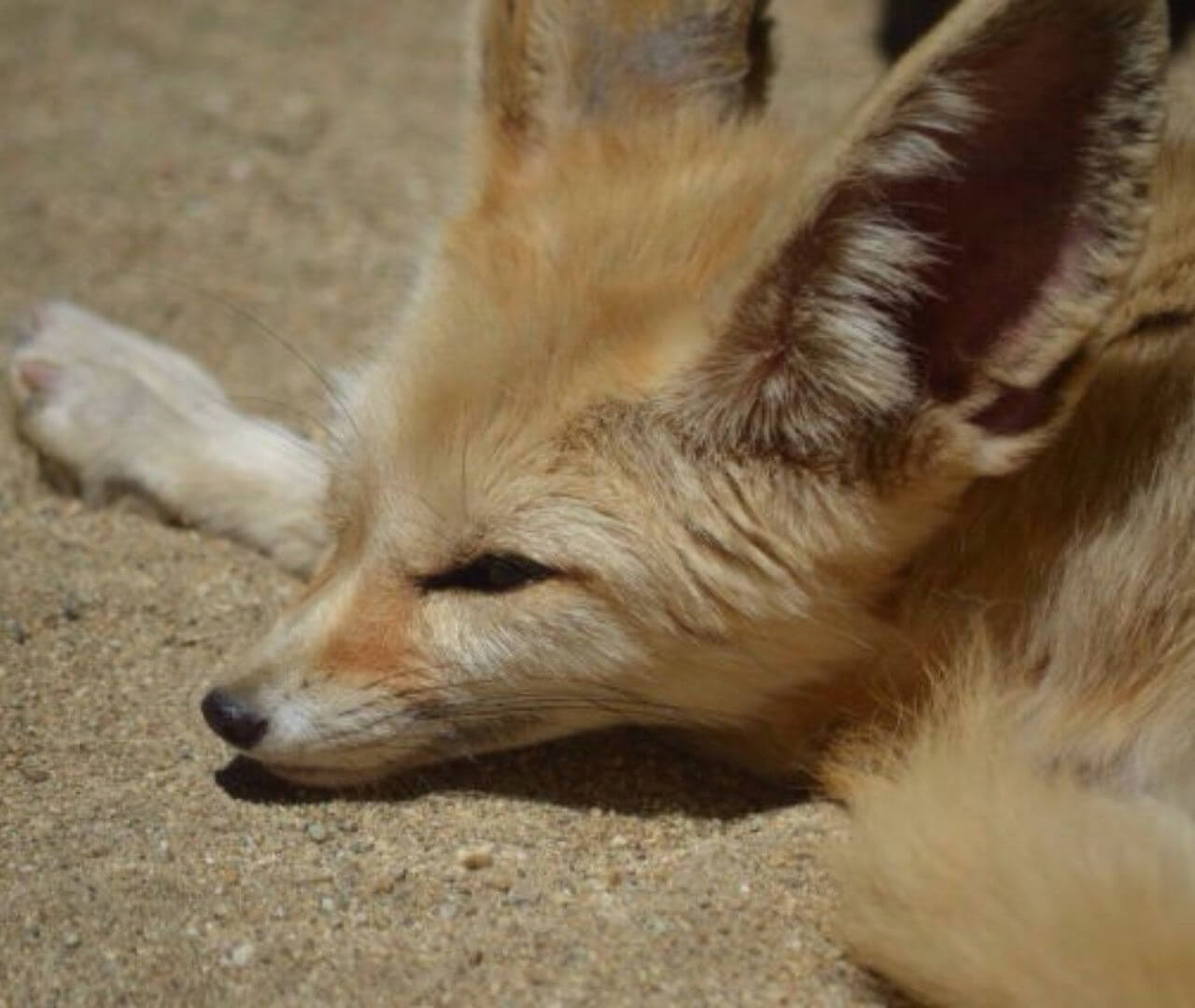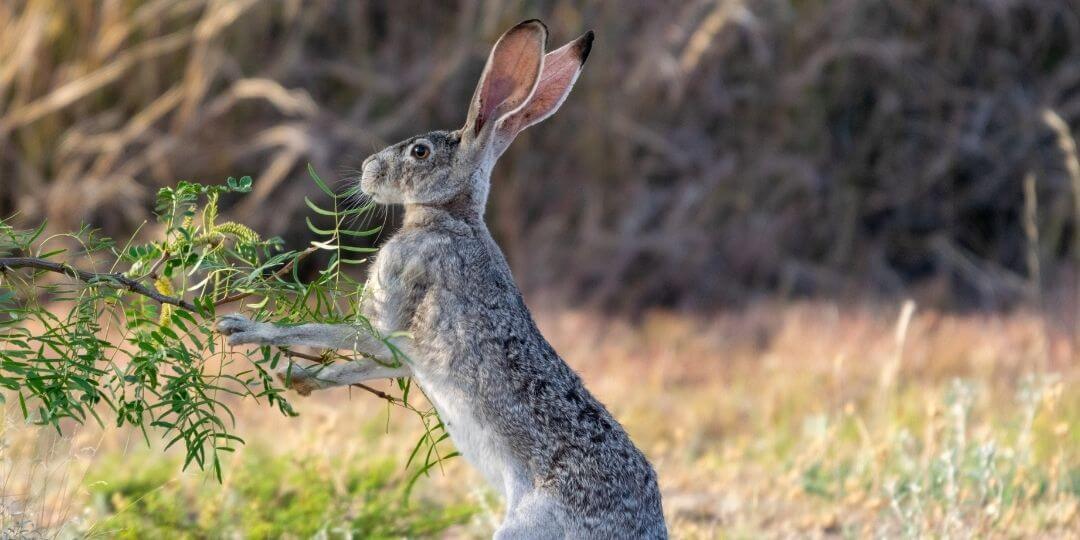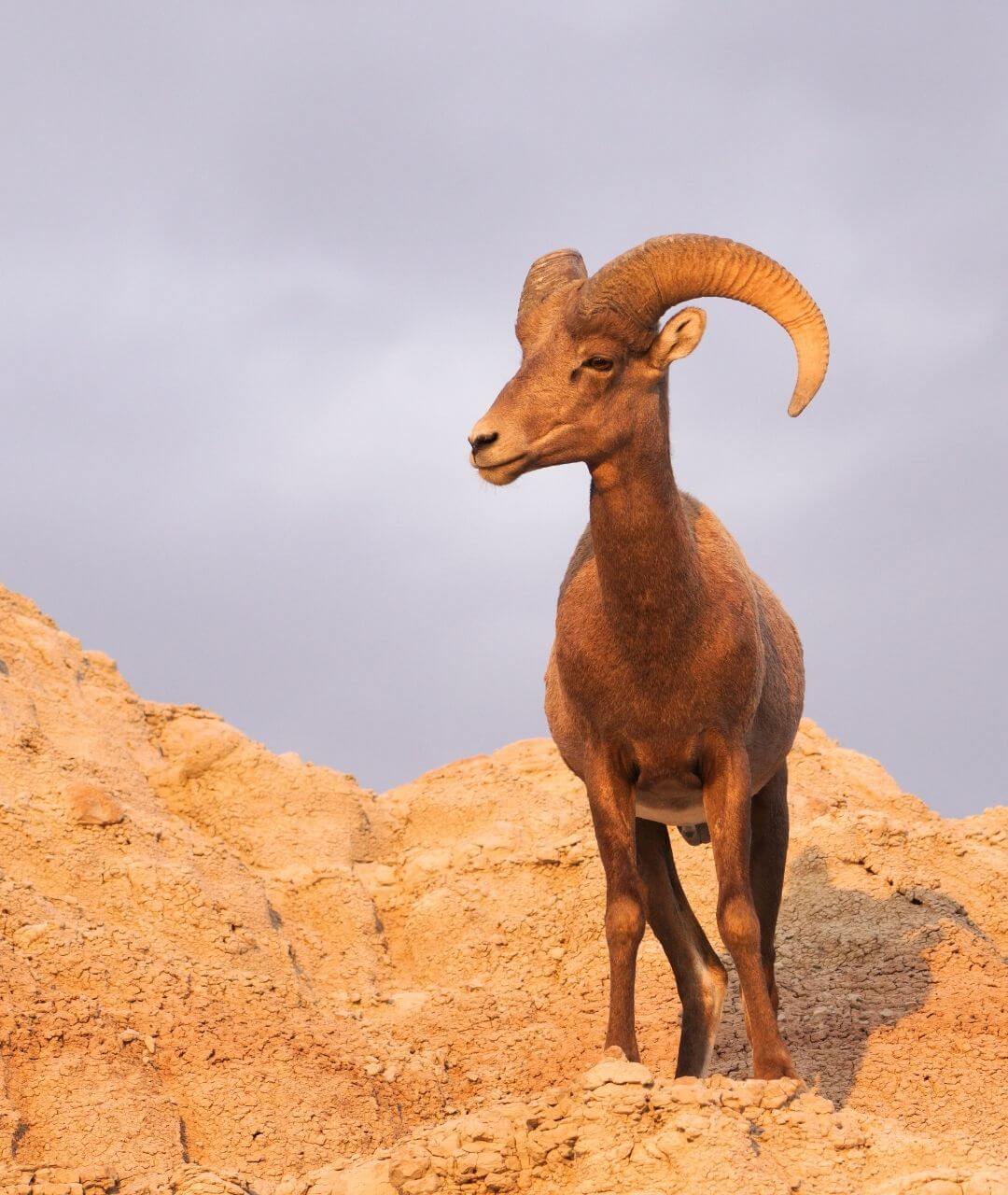Desert Ecosystems

What Is a Desert Ecosystem?
Word of the Week
Transpiration
Transpiration is the process of water vapor escaping a plant through the small openings in the leaves and stems.
Because water in the desert is scarce, many plants have adapted to reduce water loss through transpiration by having small leaves.
Species Spotlight
Fennec Fox | Vulpes zerda
Known for their huge ears, fennec foxes are one of the smallest (and cutest) canines in North Africa! They are found throughout the Sahara Desert and have amazing adaptations that help them survive in hot desert ecosystems. Fennec foxes have fur on their paw pads that protect their feet from the hot sand. They also pant, just like a dog, allowing heat to escape their bodies. Because of their small size, they can be easy prey for Verreaux’s eagle-owls and jackals, but their tan color helps them camouflage to avoid predators. Their huge ears are not only good for hearing prey and predators, but they also assist in keeping them cool!
They often dig burrows in the sand to stay cool during hot days and stay hidden from predators. Fennec foxes are nocturnal and come alive at nighttime to hunt for grasshoppers, locusts, small rodents, lizards, birds, and their eggs. They usually live in family groups with up to 10 foxes and communicate by barking, howling, and squeaking. Fennec foxes are threatened by climate change, diseases passed from domestic dogs, the fur trade, and the pet trade.
BRAIN BLAST
Identify 3 adaptations that fennec foxes use to survive in the hot deserts of Africa. Do any other desert animals have these same adaptations? If so, who?
Conservation Corner
Water Conservation
Water is an incredible thing! Not only do all plants and animals need water to survive, but we can also create renewable energy using water. Freshwater resources are limited, so we must all do our part to conserve water and keep it clean so we can use it for generations to come. You can help keep our waterways clean by not dumping chemicals, reducing the amount of trash you produce, and disposing of items properly. There are also many things you can do to help reduce your water use, such as...
Take shorter showers. You can even set a timer to see how quickly you can bathe.
Turn off the water while you brush your teeth, wash your face, or shave.
Store rainwater to use in your garden or on your house plants.
Only run your washing machine and dishwasher when they are completely full.
Glossary
Abiotic
A part of an ecosystem that is nonliving.
Biotic
A living organism.
Desert
An ecosystem that receives very little rain.
Ecosystem
An area of the planet filled with living and nonliving things that interact.
Evaporation
The process of liquid water turning into water vapor.
Herbivore
Animals that eat plants.
Nocturnal
An animal that does most of its activity at night.
Photosynthesis
The process used by plants to turn energy from the sun into energy for the plant.
Transpiration
The process of water vapor escaping a plant through small pores in the leaves and stems.
Tundra
An ecosystem characterized by freezing cold temperatures and a mostly barren landscape. It is sometimes called the frozen desert.
Water Vapor
Water in its gas form.





